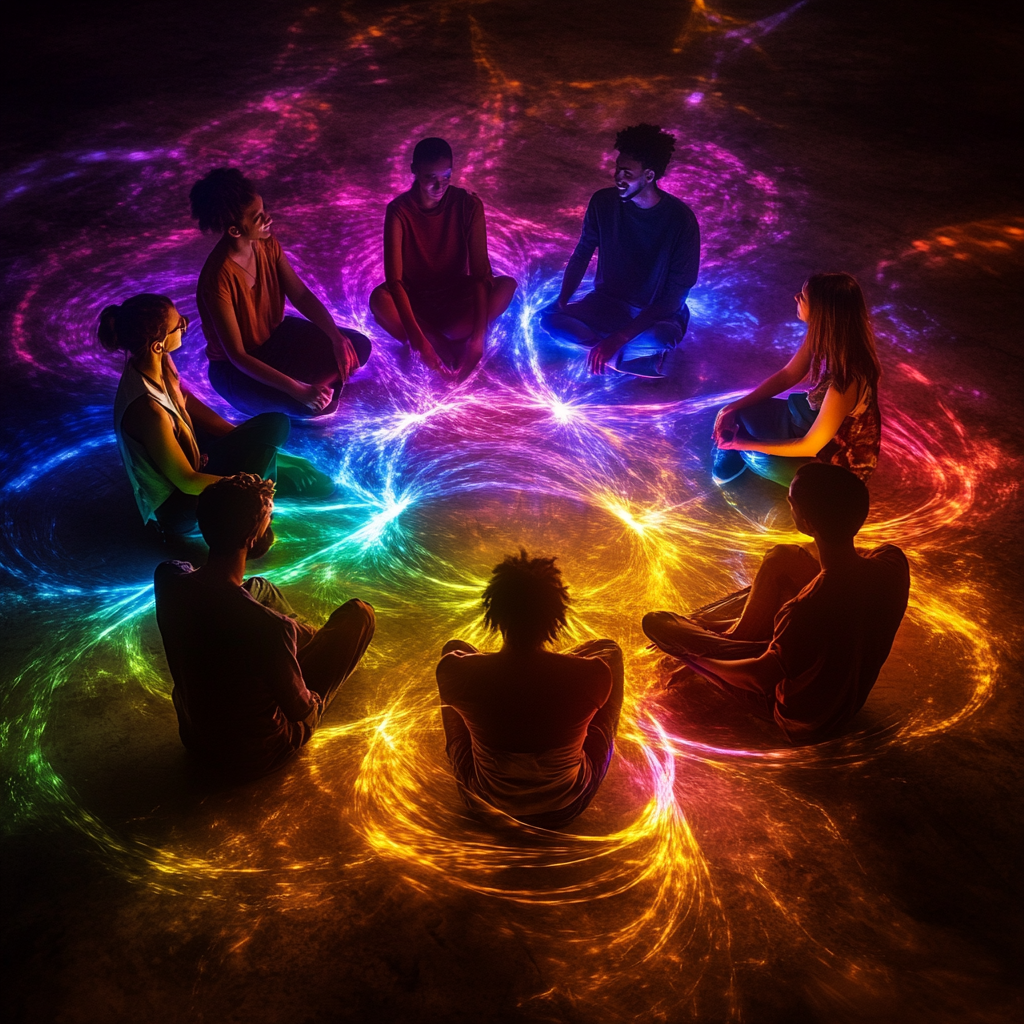Why I Love Ketamine-Assisted Therapy
Last night, I guided a group ketamine meditation experience. It was amazing. Watching six people—some who knew each other, some who didn’t—connect, attune, and find their own way through the experience was profound. There were moments of doubt, curiosity, and surrender, and by the end, the room held a range of emotions, just as it always does. Not every psychedelic experience is neatly packaged into something “positive,” and that’s okay. What matters is the container we create, the spaciousness we cultivate, and the way each person engages with the process.
From Skeptic to Believer
I wasn’t always so comfortable with ketamine. To be honest, I was scared of it. I thought it was a dangerous horse tranquilizer. I thought it would make me go into a K-hole—a dissociative state where people feel disconnected from their bodies and surroundings, often described as a kind of “out-of-body” or “floating” sensation that can be overwhelming if unexpected. I was afraid of the words anesthetic and dissociative. I was afraid of being out of control.
But that all changed with my first experience.
I was in a safe, well-held space with facilitators fresh out of Phil Wolfson’s training program. I trusted them, and because I trusted them, I felt safe enough to fully receive the experience. And what an experience it was.
Almost immediately, I had a vivid memory of sitting next to my grandmother on her couch as a child. She had already passed, but in that moment, I could feel her again—her presence, her nervous system, the deep warmth and comfort she exuded. It was like my body was reminding me that I could return to that feeling of safety any time I needed to.
That feeling led me to another memory—this time of my best friend, Brandyn. We used to spend hours sitting on the couch, watching movies, playing video games, talking about everything and nothing. There was something about him that made me trust him unconditionally. Between those two—my grandmother and my best friend—I realized that what I was remembering wasn’t just comfort; it was love. And not just love in the past tense, but love that was still present, still accessible, still alive inside me.
The Great Thing About Ketamine
One of my teachers, Daniel Shankin of Tam Integration, often says, “The great thing about ketamine is that it just allows us to relax.” And that’s exactly it. Ketamine isn’t about forcing a breakthrough or manufacturing some grand realization. It’s about allowing, softening, letting go. It’s about giving the mind and nervous system the space to do what they already know how to do—heal.
That’s why ketamine-assisted therapy can be so powerful, especially for people dealing with depression, PTSD, or anxiety. It creates a pause. It offers a moment of stillness. It gives people the chance to feel differently, sometimes for the first time in years.
The Truth About Ketamine Safety
Like anything, ketamine isn’t without its risks, and the media loves to sensationalize those risks. After Matthew Perry’s death, headlines started running with fear-based narratives. Yes, ketamine was part of his toxicology report. Yes, it can be addictive. But the reality is that someone would have to take a lot of ketamine, very frequently, to cross into dangerous territory. Therapeutic use, under professional guidance, is far from that.
Ketamine has been around for decades. In fact, in war battles, soldiers carried it to help severely wounded comrades manage pain as they were carried off the battlefield. It’s still used as an anesthetic in emergency rooms around the world because it’s one of the safest options available—it doesn’t suppress breathing like opioids do.
A Message for the Skeptical
If you’re skeptical about ketamine-assisted therapy, I get it. I was, too. The words, the media narratives, the association with recreational use—it can all seem daunting. But what I’ve come to understand is that ketamine, when used intentionally, isn’t about escaping or numbing out. It’s about reconnecting. It’s about allowing ourselves to soften into something we may have been resisting for too long—whether that’s grief, love, safety, or simply the ability to be with ourselves in a new way.
For me, it brought me back to love. And that’s something I’ll always be grateful for.





